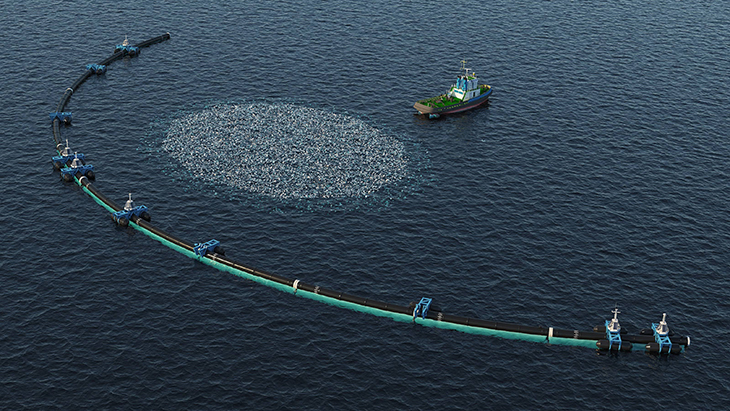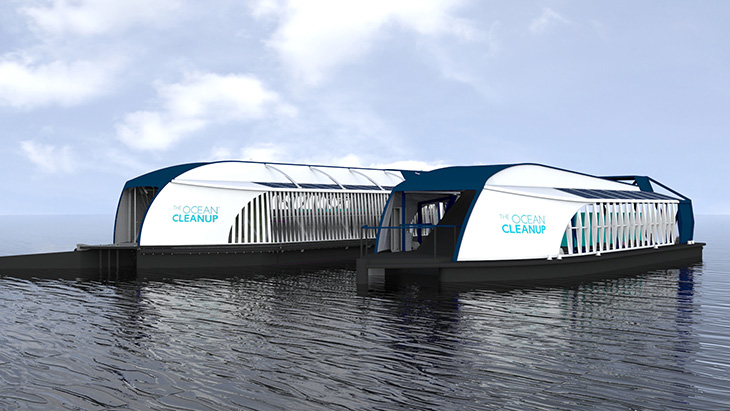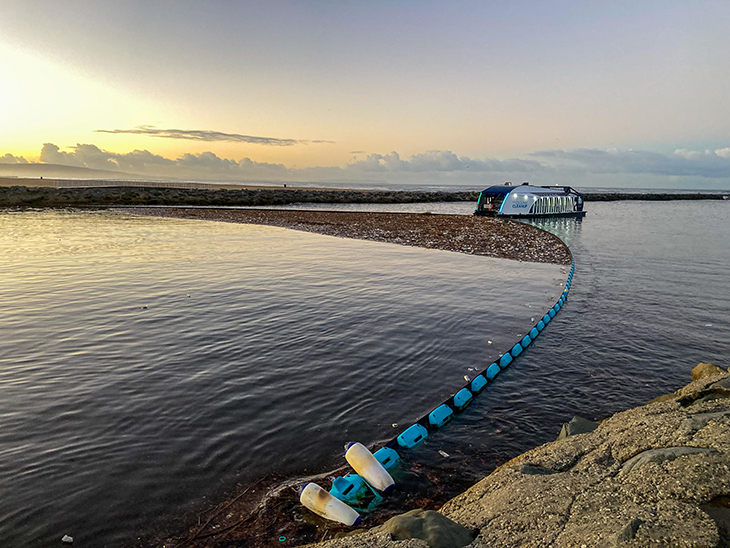
In the past week, The Ocean Cleanup organization, dedicated to addressing the issue of the Great Pacific Garbage Patch, successfully deployed their System 03 for the very first time. This new system is nearly three times larger than their previous technology and has the remarkable capability of cleaning an area equivalent to a football field every five seconds.
Prior to this milestone, the organization conducted successful tests with two smaller systems, which collectively managed to extract over 275 tons of plastic from the Garbage Patch since 2021.
The introduction of System 03 signifies a monumental advancement for the Dutch CEO, Boyan Slat, and his dedicated team as they work tirelessly toward their mission of removing at least 90% of plastic waste from the world’s oceans by the year 2040.
System 03 is comprised of a floating barrier that spans approximately 1.4 miles (2.2 km) in length. This barrier is strategically towed between two slow-moving vessels. Beneath the water’s surface, extending to a depth of 13 feet (4 meters), hangs a screen designed to capture the majority of floating plastic encountered in the ocean.
Once the collected trash is retrieved, an onboard crew takes on the responsibility of sorting it to ensure that the plastic is repurposed into sustainable new products through recycling efforts.
This week we had our largest ever extraction from the Great Pacific Garbage Patch: 11,353 kg of plastic out of the ocean for good.
As we transition to System 03, we see that increasing system size leads to bigger catches. pic.twitter.com/5UcrpATHbi— The Ocean Cleanup (@TheOceanCleanup) August 11, 2023
In their most recent collaboration, they joined forces with Kia, an automotive manufacturer, to integrate reclaimed plastic into their latest electric vehicle models. The initial shipment of salvaged plastic was delivered to Kia during the final return of System 002 to the port earlier this summer.
Demonstrating their ability to transform waste into valuable resources, they utilized their initial ocean catch to create The Ocean Cleanup Sunglasses. These sunglasses were crafted from plastic directly extracted from the Great Pacific Garbage Patch (GPGP) using System 001/B in 2019. Remarkably, these sunglasses completely sold out within 18 months and played a pivotal role in financing future cleanup initiatives.
“By making System 03 so much bigger than our previous efforts (alongside the multiple upgrades we’ve implemented) we can cover a much larger area of ocean in less time and using fewer resources,” The Ocean Cleanup shared. “This brings down our cost per kilogram of plastic removed and maximizes our benefit on the marine environment.”
The latest model also features a Marine Animal Safety Hatch, equipped with underwater cameras for constant monitoring. This allows the crew to ensure that any marine life within the plastic Retention Zone can easily find a safe exit.
Trash Coming from the Rivers
At the same time, Slat and his team of engineers are addressing another crucial aspect of the global plastic pollution problem: the world’s most heavily littered rivers. Their approach involves “shutting off the source” and intercepting plastic debris along the rivers’ routes, significantly reducing the need to capture it in the ocean, which is a more challenging endeavor.

The Ocean Cleanup’s Interceptor machines are highly efficient, solar-powered barges designed to tackle the issue of plastic pollution in rivers. When operating at their peak performance, these Interceptors have the remarkable capability to remove an impressive 220,000 pounds (100,000 kilograms) of plastic debris per day.
Indonesia set forth an ambitious objective to reduce plastic waste in its waterways by a significant 70% within a span of three years. To accomplish this formidable task, they enlisted the support of The Ocean Cleanup’s river barge.
Following successful outcomes in Jakarta, the Interceptor was subsequently deployed in various other locations around the world. These deployments include Malaysia, the Dominican Republic, Vietnam, and Jamaica. Most recently, the Interceptor made its debut in Los Angeles, where it began operations on Ballona Creek. This creek, which runs adjacent to Venice Beach, serves as a conduit for plastic waste flowing into the Pacific Ocean.

“It’s very encouraging to see this positive collaboration between our two governments and The Ocean Cleanup continue,” Lambert Grijns said. He is the Ambassador of the Netherlands in Indonesia. “Despite the scale of the plastic challenge, the endorsement of these innovative solutions and partnerships gives me hope that we can work together to finally solve this problem for the benefit of all.”
What are your thoughts? Please comment below and share this news!
True Activist / Report a typo


